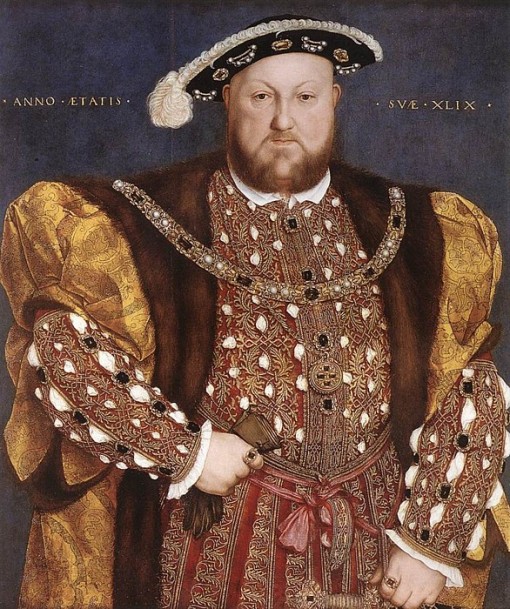Botstein revives Saint-Saëns’ rarely heard “Henry VIII” at the Bard Festival

The Bard Festival concluded Sunday with a concert performance of Camille Saint-Saëns’ fifth opera, Henry VIII. The opera stood at the conclusion of “Saint-Saëns and his World,” two festival weekends celebrating the legacy of the French composer.
Saint-Saëns was a child prodigy and prolific composer with a career spanning almost eight decades. He is now remembered for a few “greatest hits,” but a large part of his output has fallen into obscurity.
Sunday’s concert performance, conducted by festival director Leon Botstein, made a strong case for Henry VIII, an opera that contrasts the Great Affair of the titular English monarch against the public spectacle of the English court.
Musically, one can hear echoes of Wagner’s Lohengrin and, especially, Verdi’s Don Carlos. The score of Henry VIII rests firmly in the tradition of late 19th-century French grand opera. Saint-Saëns incorporates melodic ideas related to the work’s English setting with mixed success. The courtly harps and winds associated with Purcell and Byrd provide a formal accompaniment to life at the Tudor court. Elsewhere the contrast between marital infidelity and intimate palace drama contrasts with crowd scenes.
Although Henry VIII lacks exotic splashes of color, the work is filled with warm orchestral writing and sweeping vocal melodies. The love music for Henry and Anne incorporates rich chromaticism, contrasting with sturdy diatonic blocks for Henry’s showdown with the papal legate.
The second Tudor king stands stalwartly at the center of the action, played here by baritone Jason Howard. The role is written with both sonorous low notes and some difficult fortissimos that lie in the upper part of the tessitura. It is undoubtedly difficult portraying such an unsympathetic protagonist, yet Howard managed to convey a certain charm, even in his scenes with the ill-fated Anne Boleyn. Saint-Saëns seems to be attempting for the grandeur of a Philip II here, but without the opportunity for reflection, the King comes across as a cardboard figure.
Howard was at his best in the scene before the Papal Synod, where the King petitions for divorce, fails and quickly forms the Church of England. This grand courtroom scene had power and sweep, with an emotional appeal from Catherine of Aragon and proud defiance from Henry. Although the compressing of historical events into a few short moments makes for bad history, it does work as opera, with the sequence generating an explosive charge thanks to inventive instrumentation and strong choral writing.
The jewels in this performance’s crown were the two queens: soprano Ellie Dehn as Catherine of Aragon and mezzo Jennifer Holloway as Anne Boleyn. Dehn began as an icy presence, but that facade cracked as the reality of her situation became apparent. She achieved dramatic heights in the final act, with a long aria that recalled the plight of another operatic queen in a similar circumstance: Elisabeth de Valois in Don Carlos. The De profundis at the end of Act I (with a melody that the composer borrowed from the then-unperformed first part of Berlioz’s Les Troyens) underscored her grim situation with chanting monks that, again, recalled Verdi’s opera.
As Anne, Holloway generated real passion in her Act II duet with Howard. The mezzo-soprano steered Anne’s complex path through the political and personal minefields of Henry’s court, providing rich tones and heroic singing against a massed orchestral backdrop.
The libretto is based on a Spanish dramatization of these events, so it is a little surprising that the role of Don Gomez, the Spanish ambassador to the Tudor court was brought to prominence as the tenor in this opera. John Tessier made one grateful for this character’s presence, singing with a sweet yet firm tone, and standing up to the bullying of Henry even as he found himself being used as a cats-paw in this game of thrones. Basses Nathan Stark and Jeffrey Tucker provided able support as the Duke of Norfolk and the Papal legate.
Botstein remains a better musicologist than conductor, but his strong connection with the American Symphony Orchestra and commitment to this difficult work came across over the course of the four-hour performance. He took pleasure in revealing Saint-Saëns’ box of tricks, from the lengthy Lohengrin-like prelude to the third act to the unexpected Elizabethan court music in the fourth. Henry VIII was presented with several cuts, although one wished for less of the Act II ballet. A requirement of French grand opera, it took the form of an obnoxious Pas de Highlanders that, unfortunately, stayed in the ears long after the opera had finished.
Paul J. Pelkonen is a freelance writer living in Brooklyn, NY and the author of the classical music blog, Superconductor.